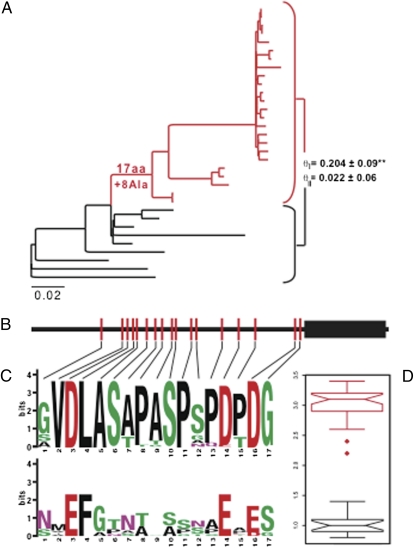Fig. 1.
HoxA11 evolved rapidly in the stem lineage of mammals. (A) Phylogenetic tree shows the relationships of species used in this study (species names are provided in Table S1); mammals are shown in red, and nonmammals are shown in black. Branch lengths are shown proportional to the number of nonsynonymous substitutions per codon. Seventeen amino acid substitutions and eight alanine insertions occurred in the stem lineage of mammals. Ala, alanine. Estimates of Gu's type I (θI) and type II (θII) functional divergence between mammals and nonmammals indicate there was a significant gain of constraint within mammals (θII P < 0.01) **P < 0.02. (B) Cartoon of mammalian-specific amino acid substitutions in HoxA11; note that no amino acid changes occurred in the DNA-binding homeodomain (black rectangle) or the C-terminal tail. (C) Sequence logos of the 17 amino acid sites substituted in the stem lineage of mammals from mammals (Upper) and nonmammals (Lower). Lines indicate the position of amino acid changes in HoxA11. (D) Box plots shows median and variation in bit scores of amino acids shown in C from mammals (red) and nonmammals (black), with higher bit scores indicating greater conservation. Note that the 17 amino acids substituted in the stem lineage of mammals are much more conserved within mammals than they are in other species.

